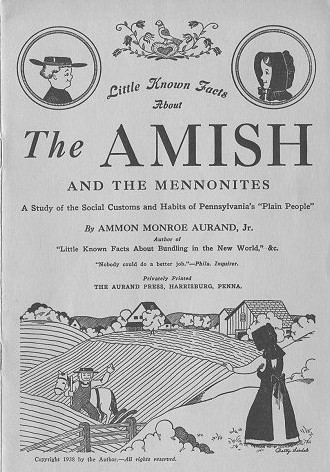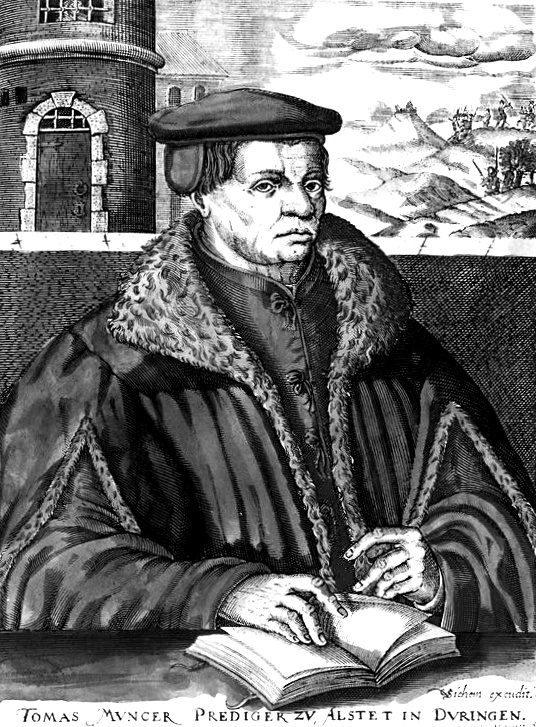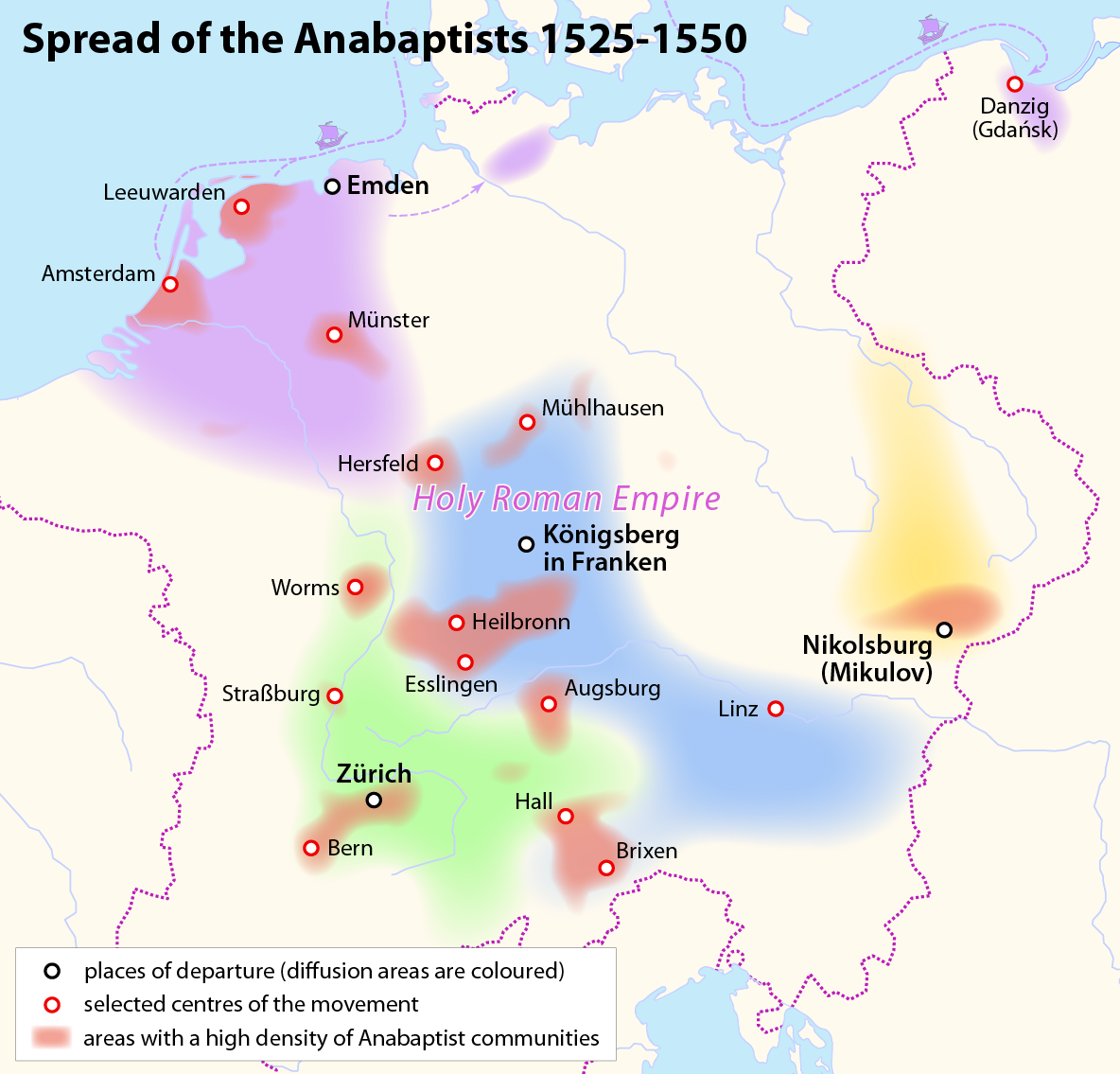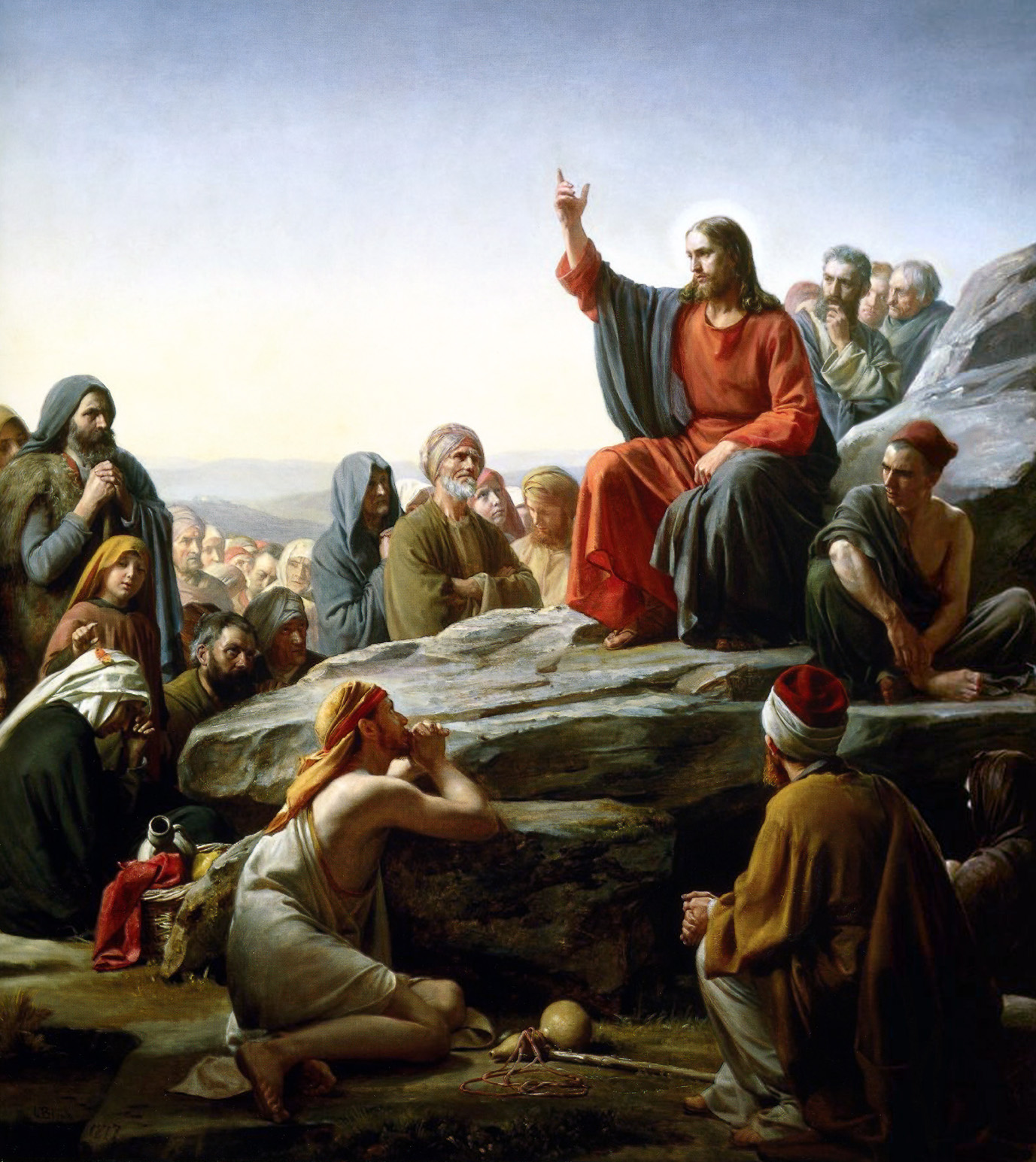|
Nonresistance
Nonresistance (or non-resistance) is "the practice or principle of not resisting authority, even when it is unjustly exercised". At its core is discouragement of, even opposition to, physical resistance to an enemy. It is considered as a form of principled nonviolence or pacifism which rejects all physical violence, whether exercised on individual, group, state or international levels. Practitioners of nonresistance may refuse to retaliate against an opponent or offer any form of self-defense. Nonresistance is often associated with particular religious groups, such as Anabaptist Christianity. Sometimes nonresistance has been seen as compatible with, even part of, movements advocating social change. An often-cited example is the movement led by Mohandas Gandhi in the struggle for Indian Independence. While in particular instances (e.g., when threatened with arrest) practitioners in such movements might follow the line of nonresistance, such movements are more accurately described a ... [...More Info...] [...Related Items...] OR: [Wikipedia] [Google] [Baidu] |
Pacifism
Pacifism is the opposition to war or violence. The word ''pacifism'' was coined by the French peace campaigner Émile Arnaud and adopted by other peace activists at the tenth Universal Peace Congress in Glasgow in 1901. A related term is ''ahimsa'' (to do no harm), which is a core philosophy in Hinduism, Buddhism, and Jainism. While modern connotations are recent, having been explicated since the 19th century, ancient references abound. In modern times, interest was revived by Leo Tolstoy in his late works, particularly in '' The Kingdom of God Is Within You''. Mahatma Gandhi propounded the practice of steadfast nonviolent opposition which he called " satyagraha", instrumental in its role in the Indian independence movement. Its effectiveness served as inspiration to Martin Luther King Jr., James Lawson, Mary and Charles Beard, James Bevel, Thích Nhất Hạnh,"Searching for the Enemy of Man", in Nhat Nanh, Ho Huu Tuong, Tam Ich, Bui Giang, Pham Cong Thien. ''Dialog ... [...More Info...] [...Related Items...] OR: [Wikipedia] [Google] [Baidu] |
Anabaptist Christian
Anabaptism (from Neo-Latin , from the Greek : 're-' and 'baptism'; , earlier also )Since the middle of the 20th century, the German-speaking world no longer uses the term (translation: "Re-baptizers"), considering it biased. The term (translation: "Baptizers") is now used, which is considered more impartial. From the perspective of their persecutors, the "Baptizers" baptized for the second time those "who as infants had already been baptized". The denigrative term Anabaptist, given to them by others, signifies rebaptizing and is considered a polemical term, so it has been dropped from use in modern German. However, in the English-speaking world, it is still used to distinguish the Baptizers more clearly from the Baptists, a Protestant sect that developed later in England. Compare their self-designation as "Brethren in Christ" or "Church of God": . is a Christian movement which traces its origins to the Radical Reformation in the 16th century. Anabaptists believe that baptism ... [...More Info...] [...Related Items...] OR: [Wikipedia] [Google] [Baidu] |
Adin Ballou
Adin Ballou (April 23, 1803 – August 5, 1890) was an American proponent of Christian nonresistance, Christian anarchism, and Christian socialism. He was also an abolitionist and the founder of the Hopedale Community. Through his long career as a Universalist and Unitarian minister, he tirelessly advocated for the immediate abolition of slavery and the principles of Christian anarcho-socialism, and promoted the nonviolent theory of praxis (or moral suasion) in his prolific writings. Life and works Ballou was born on a small farm in Cumberland, Rhode Island. Ballou's father was a farmer, and while Ballou craved a school and college education, his father didn't have the means to send him. At the time of the Christian 'reformation' sweeping through northern Rhode Island, his father became a deacon within the community. In early 1822 Adin Ballou married Abigail Sayles. Abigail Ballou died in early 1829, soon after the birth of a daughter, Abbie Ballou Heywood. Of Ballou's fo ... [...More Info...] [...Related Items...] OR: [Wikipedia] [Google] [Baidu] |
Nonviolent Resistance
Nonviolent resistance, or nonviolent action, sometimes called civil resistance, is the practice of achieving goals such as social change through symbolic protests, civil disobedience, economic or political noncooperation, satyagraha, constructive program, or other methods, while refraining from violence and the threat of violence. This type of action highlights the desires of an individual or group that feels that something needs to change to improve the current condition of the resisting person or group. Mahatma Gandhi is the most popular figure related to this type of protest; United Nations celebrates Gandhi's birthday, October 2, as the International Day of Non-Violence. Other prominent advocates include Abdul Ghaffar Khan, Henry David Thoreau, Etienne de la Boétie, Charles Stewart Parnell, Te Whiti o Rongomai, Tohu Kākahi, Leo Tolstoy, Alice Paul, Martin Luther King Jr., Daniel Berrigan, Philip Berrigan, James Bevel, Václav Havel, Andrei Sakharov, Lech Wałę ... [...More Info...] [...Related Items...] OR: [Wikipedia] [Google] [Baidu] |
Nonviolence
Nonviolence is the personal practice of not causing harm to others under any condition. It may come from the belief that hurting people, animals and/or the environment is unnecessary to achieve an outcome and it may refer to a general philosophy of abstention from violence. It may be based on moral, Religion, religious or spiritual principles, or the reasons for it may be strategy, strategic or pragmatic ethics, pragmatic. Failure to distinguish between the two types of nonviolent approaches can lead to distortion in the concept's meaning and effectiveness, which can subsequently result in confusion among the audience. Although both principled and pragmatic nonviolent approaches preach for nonviolence, they may have distinct motives, goals, philosophies, and techniques. However, rather than debating the best practice between the two approaches, both can indicate alternative paths for those who do not want to use violence. Nonviolence has "active" or "activist" elements, in that ... [...More Info...] [...Related Items...] OR: [Wikipedia] [Google] [Baidu] |
Amish
The Amish (, also or ; ; ), formally the Old Order Amish, are a group of traditionalist Anabaptism, Anabaptist Christianity, Christian Christian denomination, church fellowships with Swiss people, Swiss and Alsace, Alsatian origins. As they maintain Nonconformity to the world#Anabaptism, a degree of separation from surrounding populations, and hold their faith in common, the Amish have been described by certain scholars as an ethnoreligious group, combining features of an ethnicity and a Christian denomination. The Amish are closely related to Old Order Mennonites and Conservative Mennonites, denominations that are also a part of Anabaptist Christianity. The Amish are known for simple living, plain dress, Christian pacifism#Anabaptist churches, Christian pacifism, and slowness to adopt many conveniences of modern technology, with a view neither to interrupt family time, nor replace face-to-face conversations whenever possible, and a view to maintain self-sufficiency. The Amis ... [...More Info...] [...Related Items...] OR: [Wikipedia] [Google] [Baidu] |
Anabaptist Christianity
Anabaptism (from Neo-Latin , from the Greek : 're-' and 'baptism'; , earlier also )Since the middle of the 20th century, the German-speaking world no longer uses the term (translation: "Re-baptizers"), considering it biased. The term (translation: "Baptizers") is now used, which is considered more impartial. From the perspective of their persecutors, the "Baptizers" baptized for the second time those "who as infants had already been baptized". The denigrative term Anabaptist, given to them by others, signifies rebaptizing and is considered a polemical term, so it has been dropped from use in modern German. However, in the English-speaking world, it is still used to distinguish the Baptizers more clearly from the Baptists, a Protestant sect that developed later in England. Compare their self-designation as "Brethren in Christ" or "Church of God": . is a Christian movement which traces its origins to the Radical Reformation in the 16th century. Anabaptists believe that bapti ... [...More Info...] [...Related Items...] OR: [Wikipedia] [Google] [Baidu] |
Mennonite
Mennonites are a group of Anabaptism, Anabaptist Christianity, Christian communities tracing their roots to the epoch of the Radical Reformation. The name ''Mennonites'' is derived from the cleric Menno Simons (1496–1561) of Friesland, part of the Habsburg Netherlands within the Holy Roman Empire, present day Netherlands. Menno Simons became a prominent leader within the wider Anabaptist movement and was a contemporary of Martin Luther (1483–1546) and Philip Melanchthon (1497–1560). Through his writings about the Reformation Simons articulated and formalized the teachings of earlier Swiss Anabaptist founders as well as early teachings of the Mennonites founded on the belief in both the mission and ministry of Jesus. Formal Mennonite beliefs were codified in the Dordrecht Confession of Faith (1632), which affirmed "the baptism of believers only, the washing of the feet as a symbol of servanthood, church discipline, the shunning of the excommunicated, the non-swearing of oaths ... [...More Info...] [...Related Items...] OR: [Wikipedia] [Google] [Baidu] |
Hutterite
Hutterites (; ), also called Hutterian Brethren (German: ), are a communal ethnoreligious branch of Anabaptists, who, like the Amish and Mennonites, trace their roots to the Radical Reformation of the early 16th century and have formed intentional communities. The founder of the Hutterites, Jakob Hutter, "established the Hutterite colonies on the basis of the Schleitheim Confession, a classic Anabaptist statement of faith" of 1527. He formed the first communes in 1528 in Tyrole (present-day Italy). Since the death of Hutter in 1536, the beliefs of the Hutterites, especially those espousing a community of goods and nonresistance, have resulted in hundreds of years of diaspora in many countries. The Hutterites embarked on a series of migrations through central and eastern Europe. Nearly extinct by the 18th century, they migrated to Russia in 1770 and about a hundred years later to North America. Over the course of 140 years, their population living in communities of goods re ... [...More Info...] [...Related Items...] OR: [Wikipedia] [Google] [Baidu] |
Turning The Other Cheek
Turning the other cheek is a phrase in Christian doctrine from the Sermon on the Mount that refers to responding to insult without retort. This passage is variously interpreted as accepting one's predicament, commanding nonresistance or advocating Christian pacifism. Scriptural references The phrase originates from the Sermon on the Mount in the New Testament. In the Gospel of Matthew Matthew 5, chapter 5, an alternative for "eye for an eye, an eye for an eye" is given by Jesus: In the Sermon on the Plain in the Gospel of Luke Luke 6, chapter 6, as part of his command to "love your enemies", Jesus says: Interpretations This phrase, as with much of the Sermon on the Mount, has been subject to both literal and figurative Sermon on the Mount#Interpretations, interpretations. Christian anarchist interpretation According to this interpretation the passages call for total nonresistance to the point of ''facilitating'' aggression against oneself, and since human governments defend ... [...More Info...] [...Related Items...] OR: [Wikipedia] [Google] [Baidu] |
Jesus
Jesus (AD 30 or 33), also referred to as Jesus Christ, Jesus of Nazareth, and many Names and titles of Jesus in the New Testament, other names and titles, was a 1st-century Jewish preacher and religious leader. He is the Jesus in Christianity, central figure of Christianity, the Major religious groups, world's largest religion. Most Christians consider Jesus to be the Incarnation (Christianity), incarnation of God the Son and awaited Messiah#Christianity, messiah, or Christ (title), Christ, a descendant from the Davidic line that is prophesied in the Old Testament. Virtually all modern scholars of classical antiquity, antiquity agree that Historicity of Jesus, Jesus existed historically. Accounts of Life of Jesus, Jesus's life are contained in the Gospels, especially the four canonical Gospels in the New Testament. Since the Age of Enlightenment, Enlightenment, Quest for the historical Jesus, academic research has yielded various views on the historical reliability of t ... [...More Info...] [...Related Items...] OR: [Wikipedia] [Google] [Baidu] |
Sermon On The Mount
The Sermon on the Mount ( anglicized from the Matthean Vulgate Latin section title: ) is a collection of sayings spoken by Jesus of Nazareth found in the Gospel of Matthew (chapters 5, 6, and 7). that emphasizes his moral teachings. It is the first of five discourses in the Gospel and has been one of the most widely quoted sections of the Gospels.. pages xi–xiv. Background and setting The Sermon on the Mount is placed relatively early in Matthew's portrayal of Jesus's ministry—following, in chapter 3, his baptism by John and, in chapter 4, his sojourn and temptation in the desert, his call of four disciples, and his early preaching in Galilee. The five discourses in the Gospel of Matthew are: the Sermon on the Mount (5-7), the discourse on discipleship ( 10), the discourse of parables ( 13), the discourse on the community of faith ( 18), and the discourse on future events ( 24- 25). Also, like all the other "discourses", this one has Matthew's concluding statemen ... [...More Info...] [...Related Items...] OR: [Wikipedia] [Google] [Baidu] |










